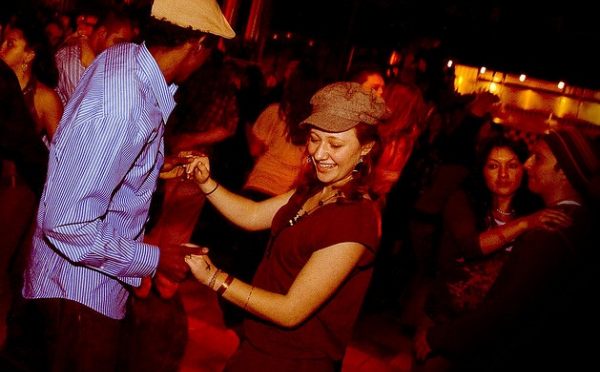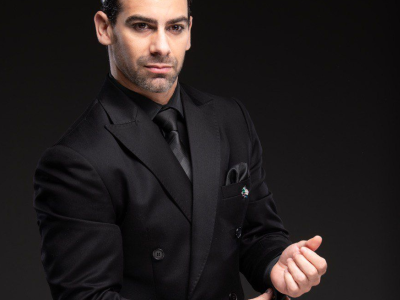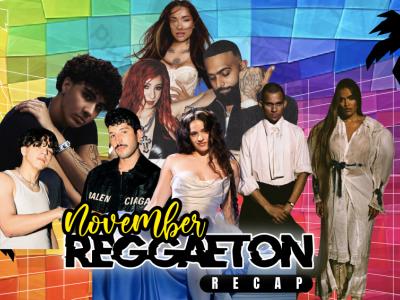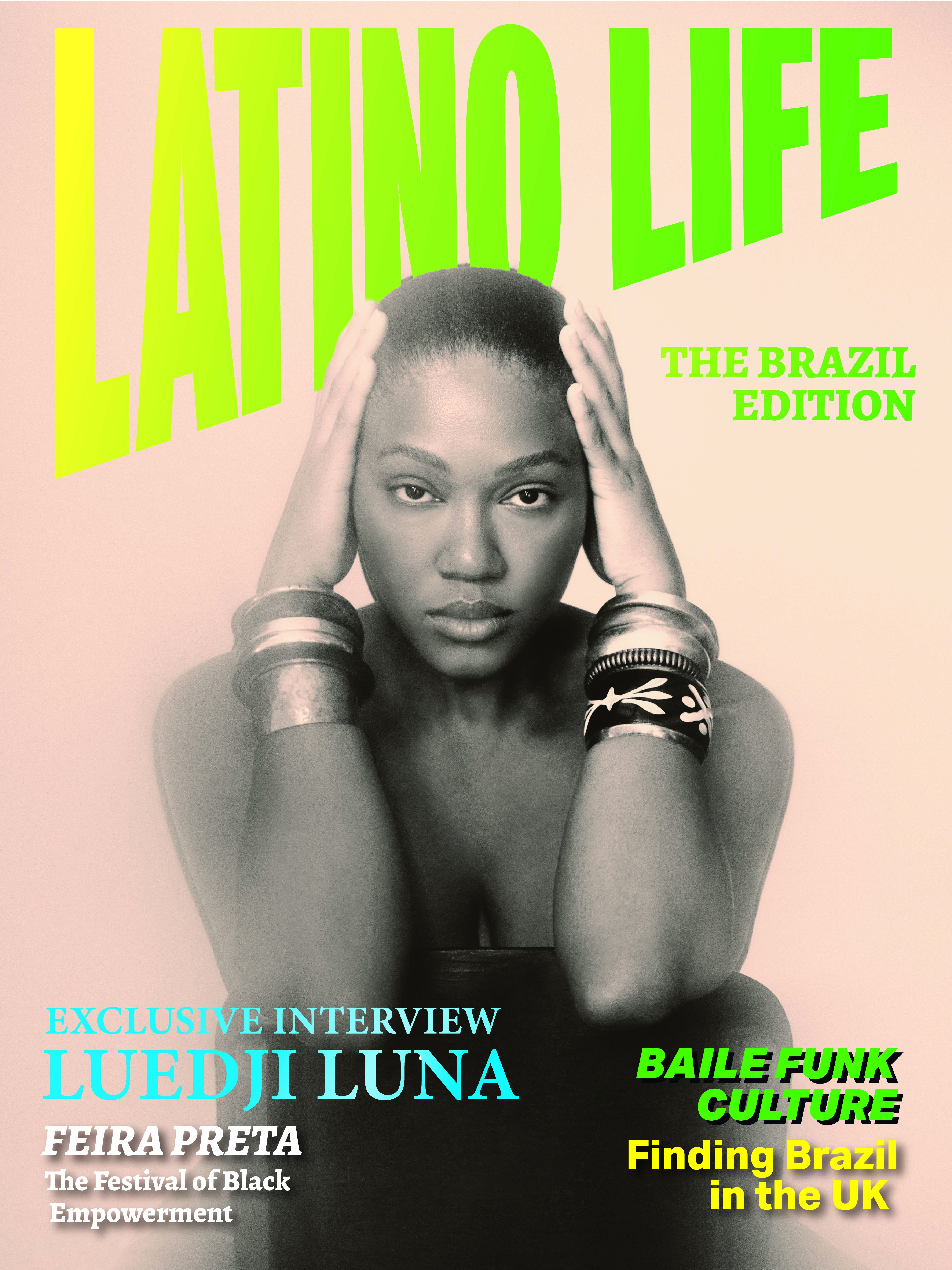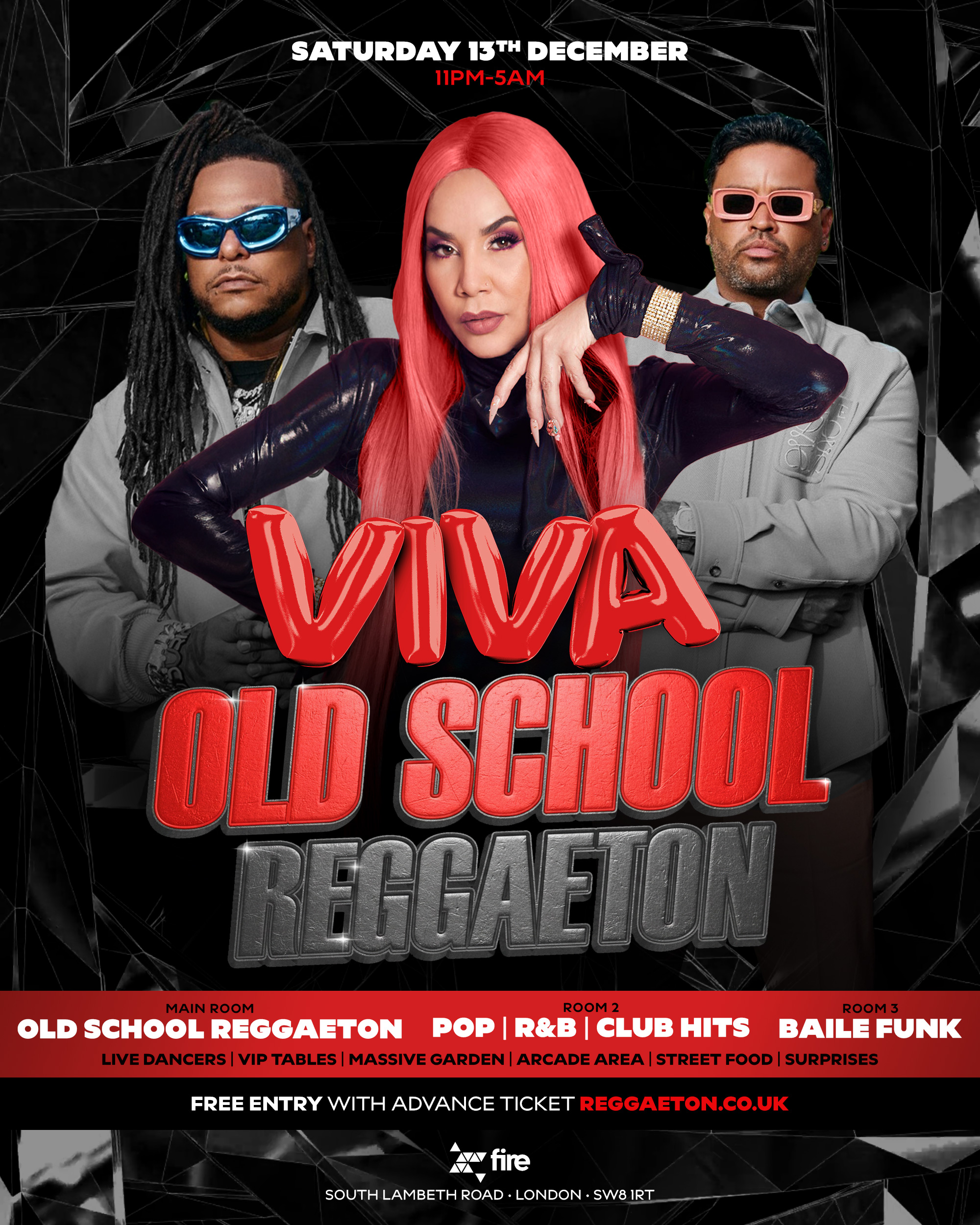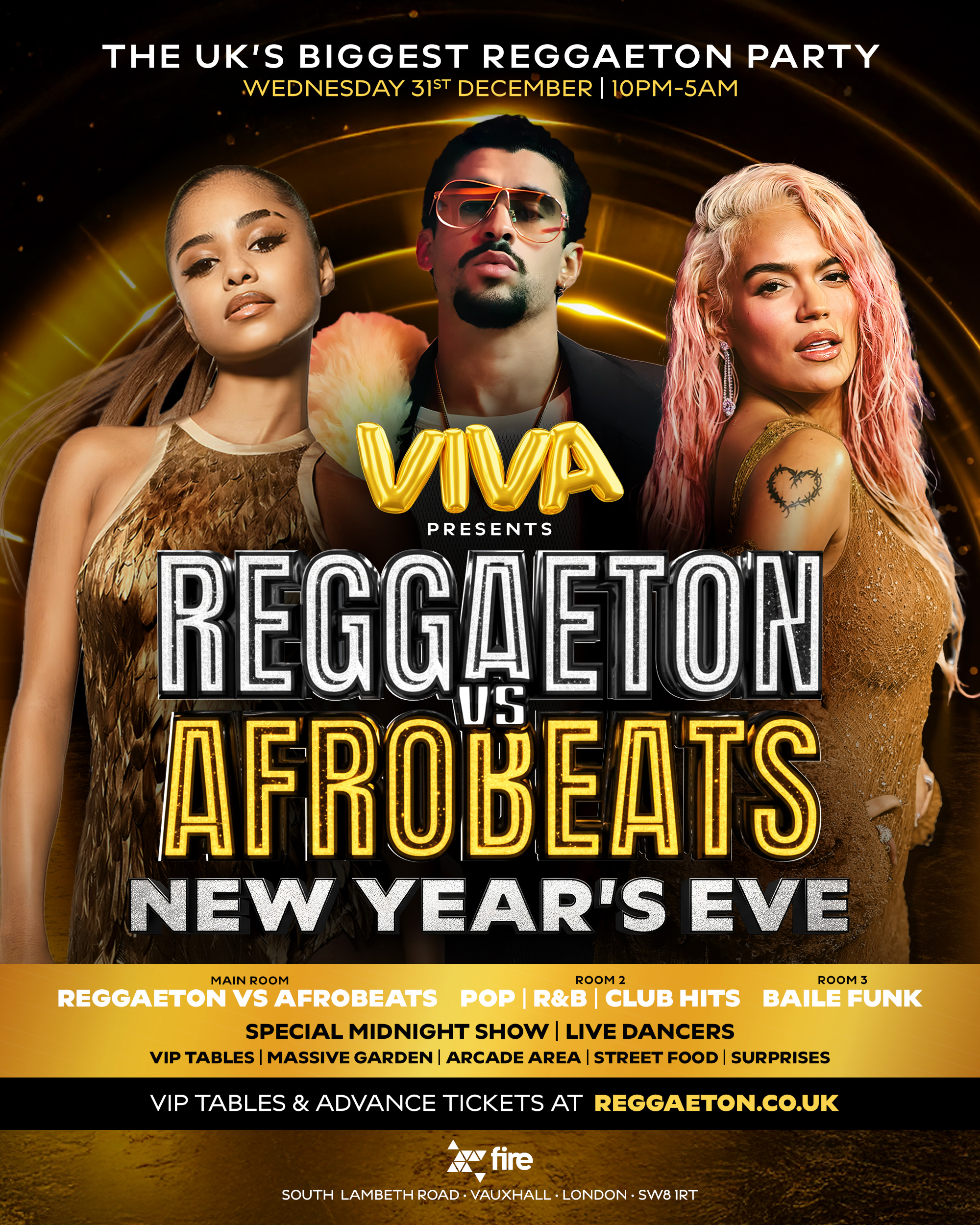Glittery threads balance on silicone breasts. Stiletto heels push buttocks up to pert perfection, and the low cut elastic jeans (mostly white) streamline the Amazon curves. You expect some fiery Spanish to explode from the large crowd of pouting J-Lo look-alikes, abundant in luscious silky hair and coffee coloured skin. Instead a strange Colombian accented Spanish cockney shoots out, “Wassup, Mami, you looking buena girl!” or “Wagwan, parse!”
From the flirty street party atmosphere already brewing you could be forgiven for thinking that palm trees and turquoise sea are not far away, but we are in fact under the decidedly un-Caribbean orange streetlamp glare of London Bridge’s arches. And the bulk of this crowd are 1st generation British-Latinos, born to the influx of mostly Colombian immigrants over the past thirty years.
Until recently, the 700,000 strong (according to a 2007 Foreign Office and Commonwealth report) largely London-based Latin American community was pretty much invisible. You might notice the sudden language switch were you to loiter around Elephant and Castle or Seven Sisters or watch the odd news story about cocaine mafias and illegal workers. Like most immigrant communities, Latinos in Britain have been lying low and working like donkeys to create a better life for their kids. Over the last year, however, those kids have been making their mark on London’s cultural life, most notably on the club scene, through the spread of increasingly popular Reggaeton and Urban Latin parties, the biggest being La Bomba, a regular at Ministry of Sound and SeOne at London Bridge, London’s largest club.
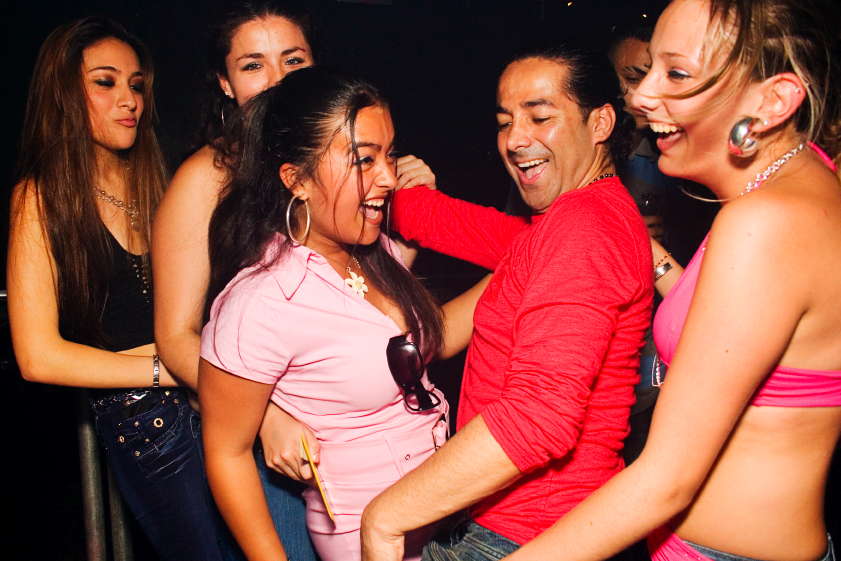 l
l
La Bomba is the Latino-Brits’ party temple. But it is also fast becoming a regular party destination for an increasingly broad clubbing crowd. Its’ 2,000 regulars, almost half of them non-Latino, make La Bomba now one of London’s most successful club nights. And the party has already been exported to Germany and Spain, with a weekly residency in Pacha, Ibiza.
Inside SEOne, the organizers have gone to town with the décor. London’s street grime and lamp glare soon melt away in warm Caribbean feel; huge drapes covering the ceiling flutter to the salsa melody in one room while, in another, palm trees shudder to the bass of Reggaeton – a mix of Dancehall, Hip-Hop and Afro-Latin riffs. Latin House and Electronica pump away in the third. Pasty male punters gawp as British Latina Princesses, their plump buttocks peering out under sequined dresses, strut through the rooms with their feigned aloofness. But as the pump and grinding or “perreando” in the main Reggaeton room begins, their decorum evaporates.
“It is partly because of the high female turnout that we never have any trouble at our events,” says Venezuelan born DJ Jose Luis, the UK’s top Latin Urban DJ and La Bomba promoter. “Latina girls love Reggaeton and the fact that so many come to our events brings down the testosterone level.” He adds that Latinos are pretty chilled, happy and tolerant in general, citing one time when the end of his Reggaeton party overlapped with a transvestite after-party. Rather than produce tension, “these little Colombian and Ecuadorian guys were getting all frisky, asking these huge divas to dance with them. It was so cute.”
What is also attractive is La Bomba’s diverse racial mix. With its aggressive dancehall sound, Reggaeton is an unlikely melting pot. Originally from Panama (more specifically Panama’s huge Jamaican community who were taken there to build the canal a century ago) and developed in Puerto and New York, Reggaeton attracts a large Caribbean-British crowd because of its dancehall element, and is also surprisingly popular with Asians, who have even produced their own sub-genre - Bangraton.
“I think the Reggaeton scene appeals to non-Latinos in Britain because it is basically the aggressive, raw rhythm similar to Bashment and Hip-Hop that young people like but in a non-aggressive environment.” Says James Horrocks, British club and music industry veteran and recent convert to Reggaeton. “There are other popular Latin genres like Baile Funk, but the difference is that Reggaeton is so much bigger worldwide.”
Indeed there is no doubt that the cross over to mainstream in the UK has been facilitated by Reggaeton’s huge popularity in the US, because of the size of the Latino community there, and its influence on major commercial US (thus global) hip-hop and pop artists. Artists such as Jay Z, Lenny Kravitz, and Nelly Furtado are pretty much obliged to do Reggaeton tunes and remixes if they want to maximize their appeal. So globally, people have got used to the sound of Reggaeton, even if they are unaware of it.
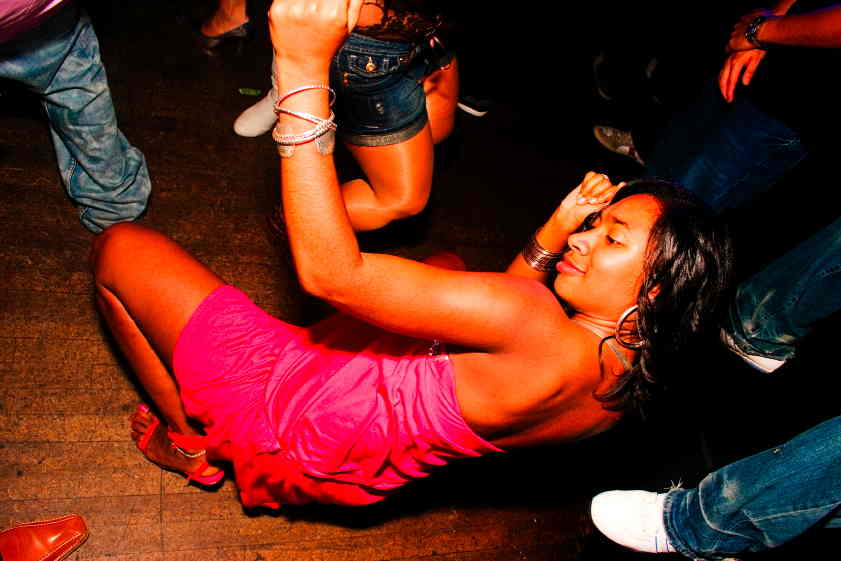
Jose Luis stresses that Reggaeton is only one of a whole stream of Latin infused genres – from Latin House to Latin Hip-Hop - which have formed part of the urban music landscape and club scene in the US for years, with the likes of big producer-DJ names like Lou Vega and Eric Morillo, that has trickled to Europe but have the potential to break more ground. But more than helping to take the music he loves out the ghetto and to the masses, Jose Luis says his motivation has always been to create something that British Latinos can feel proud of. Something they feel is theirs.
“I started out because there were lots of so-called Latin parties going on in London that didn’t represent anything about me or the Latinos here,” says Jose Luis.” The English people doing them were not inclusive or even aware of the Latin community here. It was strange them doing Latin things that us Latinos couldn’t identify with at all.”
And over the last twenty-five years there are more and more Latinos in Britain wanting to be counted. Most have come from Colombia, as economic migrants in the late 1970s, when the cartels were busted in the late 1980s and fleeing from a 40-year long civil war in general. Whilst Spain has naturally the biggest Latino population, the UK has been the second most popular destination in Europe. It is now estimated that Britain has the third largest Colombian Diaspora after the US and Spain.
“I’ve been brought up two ways, my Colombian way which is family orientated, and the English way which is more controlled and organized. When I was a kid I felt kind of different and hung out with the Arabs because they seemed more like me, but now our community has got a lot bigger and stronger,” says 20-year old Carlitos from Paddington, born of Colombian Parents. “Parties like La Bomba are important because we feel we are showing our culture and how we party and breaking the ignorance that I felt a lot from English people when I was growing up. It’s just what London needs.”
Through Jose Luis’ parties Britain is now at the forefront of the Urban Latin music scene in Europe, even exporting to Spain where the shared language and size of its Latin community would make it the most obvious pioneer. “It’s clear. The reason that Latin promoters in Spain have not had the same success that we’ve had here in attracting non-Latinos is because of the racism there, and especially towards Latinos. Latinos are treated in Spain how I guess the ‘Pakis’ used to get treated here. Here you don’t get beaten up for being Latino. In Spain you do. Being Latino and going to anything Latino is certainly not seen as cool by most Spaniards.”
It seems that the diversity inherent in both the British urban and Latin urban cultures makes a good match. As Jose Luis says: “Latin is not a race it’s a result of many influences and cultures. I think its appeal here is in this diversity.” Because La Bomba is rooted in a fresh and authentic cultural movement indigenous to London, it has that buzz that Hip-hop and Garage clubs used to in the US in the 80s. But while Jose Luis takes this flavour upmarket with a weekly night at China White from October, he is aware that he cannot lose his core followers like Carlitos, who is wary of the movement close to his heart losing its edge to commercialism.


